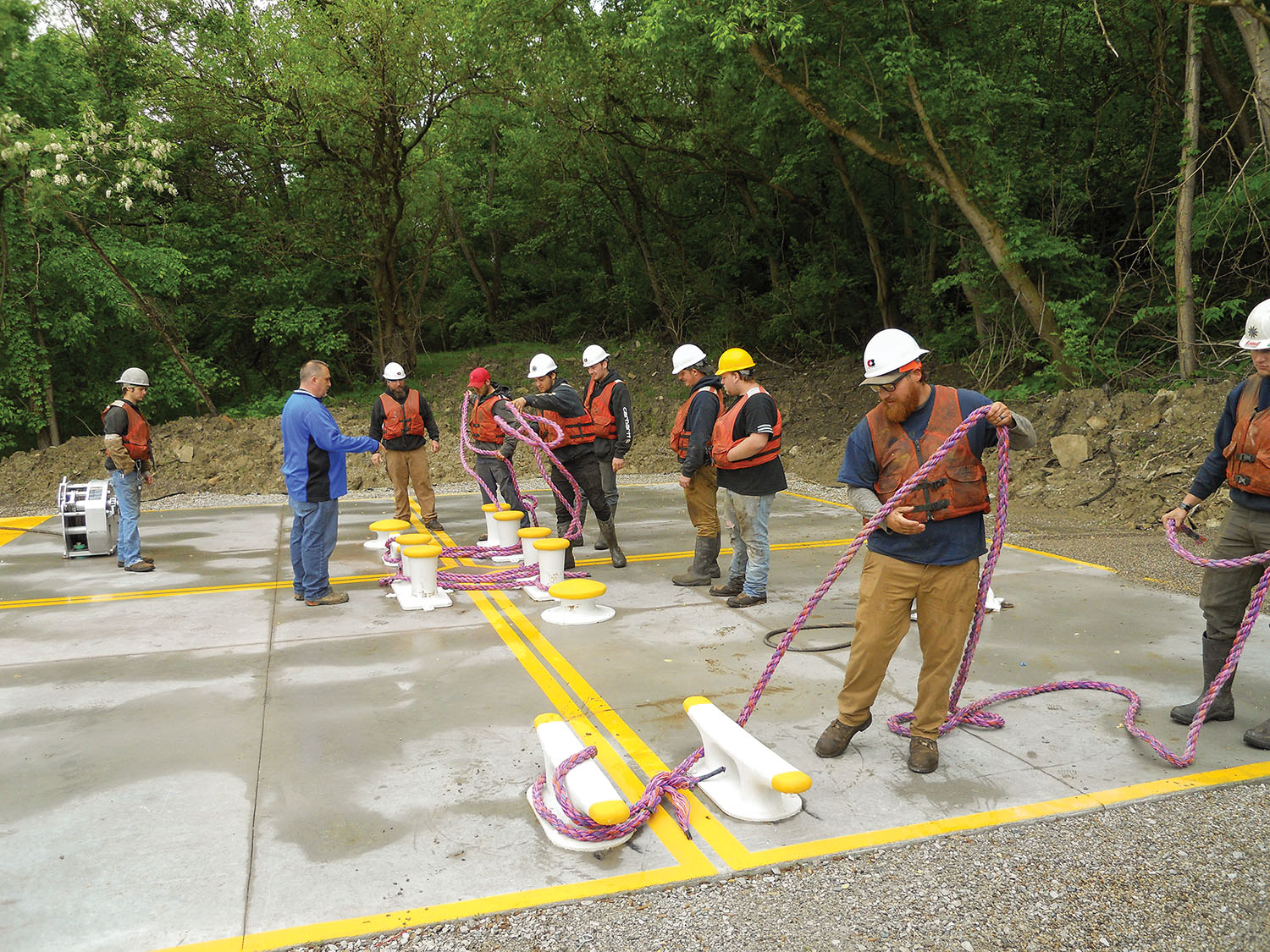By Greg Schabell
Safety Manager
C&B Enterprises LLC
When C&B Marine, a full-service marine company headquartered in Covington, Ky., formed eight years ago, new hires spent one day conducting powerplant training so they could enter a customer’s property to get to the vessel, followed by a half day spent on a dock for “practical” training.
This training program was advanced for companies of similar size in our area of operations. Nevertheless, many new hires were still left feeling unprepared for working on the river. The partners at C&B were aware that the employee pool lacked the skill sets and familiarity with the river that previous generations often brought with them.
The first major step that C&B took occurred about five years ago, when the partners decided to expand orientation and focus on materials targeted on river operations. We added one day to the classroom training and started getting employees on actual vessels and fleets during the field orientation day. The classroom training consisted of safety videos and PowerPoint presentations and was conducted in an office building far away from our operations.
The next major change happened in 2017, when we realized that orientation needed to be on the river where recruits could see and experience our operations first-hand. We converted the garage next to one of our crew houses into a training facility. We put up signs, calendars and warnings on the walls, like they would see on one of our vessels or facilities.
The new recruits stayed in the crew house and slept in bunk style rooms to get them familiar with living conditions. At the end of each day, they were required to put everything away and clean the training facility and house. The day would end only when everything was cleaned up; if they got finished cleaning early, they were cut loose early. We also added another day to the classroom training to address our expanding operations, including liquid cargo and waterway construction.
In 2019, C&B made its most significant investment in training yet. We’ve recently completed a 37-by-32-foot training pad simulating a four-barge coupling. On one barge there’s fixed rigging, on another there are fittings for portable rigging, and the other two barges have different style winches. We have a mix of kevels, timberheads and buttons for different tie-offs. After they are issued personal protective equipment and given a review of line handling safety, the recruits head outside in their work vests, gloves and safety-toe boots.
We send them over to a storage shed and they each carry out a 40-foot section of leaving line, ratchets, wire and chain to bring over to the pad. They will go out for at least one hour in the morning and the afternoon for all three days of “classroom” training.
The recruits are broken up into small groups of three or four people and set up at different stations. They carry ratchets and heavy equipment on gunnels, tie off to kevels and tie off to timberheads.
Day 1 focuses on upriver and downriver operations with leaving lines. Day 2 focuses on laying wires, and Day 3 focuses on advanced seamanship, including splicing eyes, bowline knots, steamboat hitch and chokers.
By the time we take them across the road to the harbor, the employees already have a full day of practical training under their belt. The biggest problem in the past with field orientation is that it stood alone. Whatever skills the recruit could acquire in four hours were lost just as quickly. Now that training has been reinforced by the preceding three days, the training skill levels are much more advanced and the employees will retain much more of it.
When new employees arrive at their assigned vessel, they will be much better prepared and have the confidence that they can accomplish this job.
We hope that this will lead to improvements with retention. The pilots and crews know that they’ll be getting prepared and knowledgeable co-workers. Our customers will be happy that we’ll experience fewer delays while the “new guys” figure it out. C&B will experience fewer injuries and incidents with better-trained employees.
The partners at C&B insisted, “This was the investment in our employees that we needed. This represented a large investment for a company C&B’s size, but it will allow us to continue to grow.”
And we are not finished! C&B Marine is committed to continual improvement, and nowhere is this more important than the training program. Next, we’ll add a confined space structure, a tow-knee and a high/low tie off station.
We live by our motto: “Whatever It Takes!”
Caption for photo: New employees “learn the ropes” on C&B’s new training pad, which simulates a four-barge coupling. (Photo courtesy of C&B Marine)




